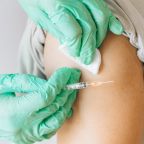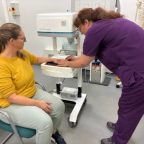
Preventing Occupational Skin Disorders - The Role of Effective Hazard Management
Occupational skin disorders (OSDs) are significant health issues within workplaces, impacting employees across various sectors. These conditions can range from temporary irritations to severe, long-lasting diseases. Managing these hazards effectively is crucial for maintaining a healthy work environment.
Identifying Skin Hazards
The initial step in safeguarding workers involves identifying potential skin irritants and allergens. This process requires a detailed examination of the workplace to pinpoint substances that could harm the skin.
Industries such as healthcare, construction, and manufacturing often use materials and chemicals that pose significant risks. Utilising a comprehensive approach, including consulting safety data sheets for chemicals and materials, helps in understanding their potential impact on skin health.
Engaging with employees for their insights and experiences can also reveal less obvious hazards, ensuring a more thorough identification process and enhancing protective measures accordingly.
Risk Assessment and Management Strategies
After identifying potential hazards, the next step is assessing and managing these risks to minimize exposure. This is where a COSHH assessment template becomes an essential tool. Specifically designed to evaluate the risks associated with hazardous substances, a template from HS Direct helps employers systematically identify, evaluate, and mitigate skin exposure risks.
This focused approach ensures that only one section of the prevention strategy relies on detailed documentation, allowing for comprehensive management without overwhelming redundancy.
Implementing Protective Measures
Reducing the risk of OSDs involves several key strategies, including substituting harmful chemicals with safer alternatives, improving workplace ventilation, and enforcing safe handling procedures.
The choice of personal protective equipment (PPE), such as gloves and protective clothing, is crucial. Selecting the right PPE based on the specific hazards present ensures effective protection against skin contact with harmful substances. It's also vital to maintain these protective measures and review them regularly to adapt to any changes in the working environment or updates in safety standards.
Employers should conduct regular risk assessments, leveraging tools like the COSHH assessment to identify and mitigate risks, ensuring the health and safety of their employees.
Education and Training
Knowledge and awareness are powerful tools in preventing OSDs. Workers must be informed about the risks associated with their roles, the importance of using PPE correctly, and the correct actions to take if they notice signs of skin disorders.
Regular training reinforces safe practices and encourages compliance with safety protocols. This education should not be a one-time event but an ongoing effort to keep safety at the forefront of workers' minds.
It's also beneficial to engage employees in discussions about safety measures, encouraging them to share their experiences and suggestions for improving workplace safety.
Monitoring and Early Detection
Ongoing monitoring and early detection of skin problems are vital for effective OSD prevention. Employers should encourage prompt reporting of any skin issues, facilitating early intervention and treatment. Regular health checks can also identify the early signs of skin disorders, allowing for adjustments in prevention strategies as necessary.
Implementing a systematic approach to monitor the health of employees not only minimises the risk of chronic conditions but also underscores the employer's commitment to maintaining a healthy and safe working environment.
In Short
Preventing occupational skin disorders is a multifaceted task that requires a combination of hazard identification, risk management, protective measures, education, and vigilant monitoring. This approach not only protects employees from the immediate dangers of hazardous substances but also contributes to the long-term health and productivity of the workforce.

















